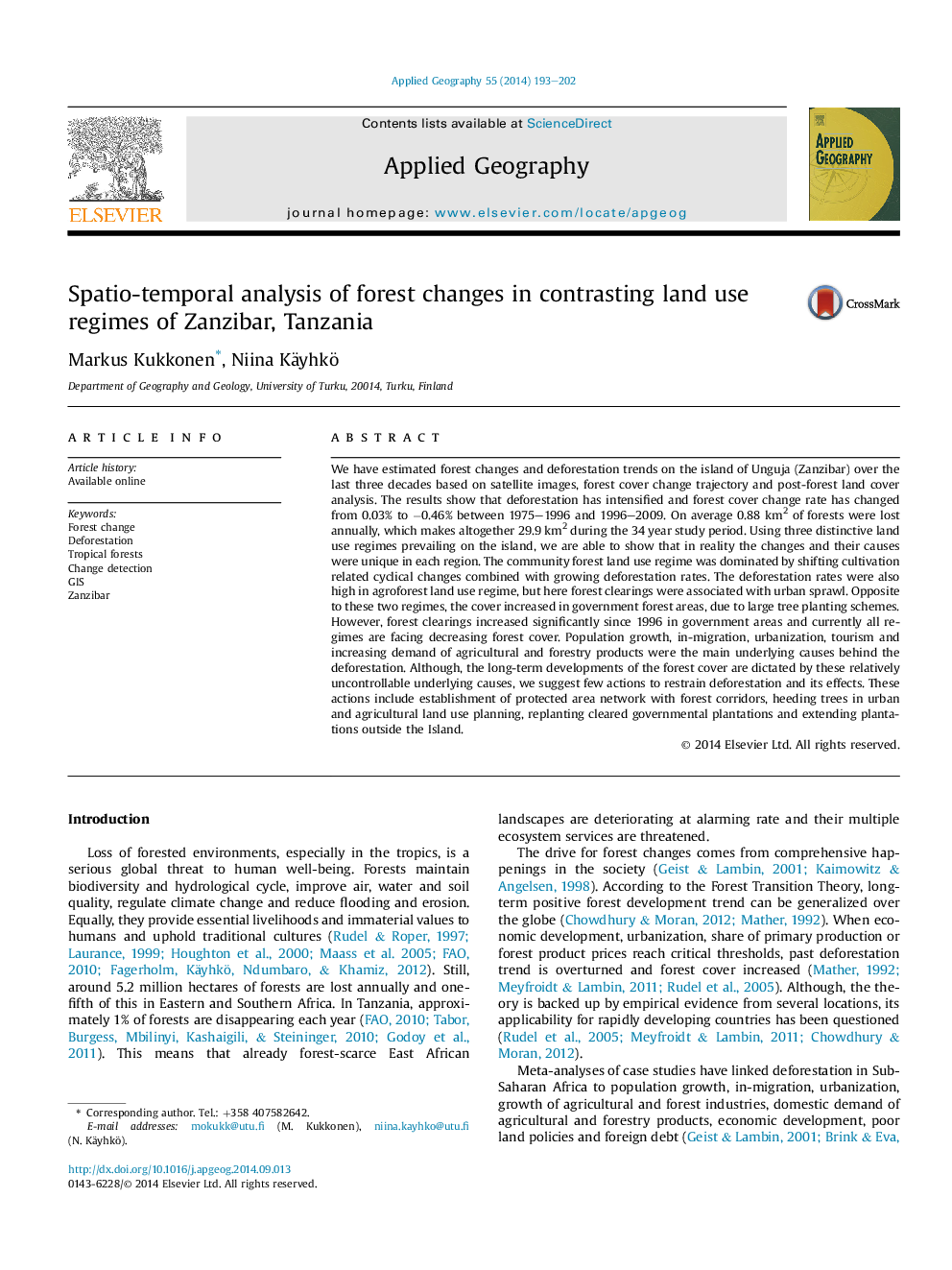| Article ID | Journal | Published Year | Pages | File Type |
|---|---|---|---|---|
| 6538682 | Applied Geography | 2014 | 10 Pages |
Abstract
We have estimated forest changes and deforestation trends on the island of Unguja (Zanzibar) over the last three decades based on satellite images, forest cover change trajectory and post-forest land cover analysis. The results show that deforestation has intensified and forest cover change rate has changed from 0.03% to â0.46% between 1975-1996 and 1996-2009. On average 0.88 km2 of forests were lost annually, which makes altogether 29.9 km2 during the 34 year study period. Using three distinctive land use regimes prevailing on the island, we are able to show that in reality the changes and their causes were unique in each region. The community forest land use regime was dominated by shifting cultivation related cyclical changes combined with growing deforestation rates. The deforestation rates were also high in agroforest land use regime, but here forest clearings were associated with urban sprawl. Opposite to these two regimes, the cover increased in government forest areas, due to large tree planting schemes. However, forest clearings increased significantly since 1996 in government areas and currently all regimes are facing decreasing forest cover. Population growth, in-migration, urbanization, tourism and increasing demand of agricultural and forestry products were the main underlying causes behind the deforestation. Although, the long-term developments of the forest cover are dictated by these relatively uncontrollable underlying causes, we suggest few actions to restrain deforestation and its effects. These actions include establishment of protected area network with forest corridors, heeding trees in urban and agricultural land use planning, replanting cleared governmental plantations and extending plantations outside the Island.
Related Topics
Life Sciences
Agricultural and Biological Sciences
Forestry
Authors
Markus Kukkonen, Niina Käyhkö,
